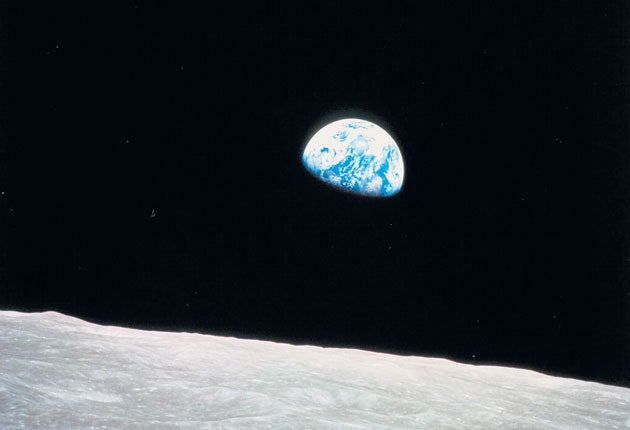Water in the Sea of Tranquillity? Oh yes there is...
Scientists believe the interior of the Moon is very similar to that of Earth, with an abundance of water below its surface

The good news for any future lunar mission is that the Moon has about 100 times as much water as previously estimated. The bad news is that each of these water molecules is locked inside tiny volcanic crystals and so is unlikely to be of any use to visiting astronauts in need of a drink.
Scientists analysing tiny grains of lunar rock brought back by the Apollo 17 mission in 1972 have found a remarkable similarity in terms of water content between the Earth's upper mantle and the Moon. Instead of the Moon being largely water-free beneath its barren surface, it appears to be just as watery as the underground rocks found on Earth, they said.
The discovery of similar quantities of water caged inside the volcanic crystals of lunar rock lends further support to the idea that the Moon was created when a massive chunk of the early Earth became separated from is mother planet in a cataclysmic event about 4.5 billion years ago.
But paradoxically the presence of the lunar water casts doubt on the idea that this event was a massive collision between the early Earth and another Mars-sized planet. If such an event had indeed created the Moon, as scientists had previously supposed, all of the lunar water should have been vapourised in the process.
Despite the perplexing problems created by the latest discovery, the researchers behind the find are hailing it as an important breakthrough in the understanding of the Earth's only natural satellite, a moon that is in fact much bigger in proportion to its orbiting planet than most of the other moons of the Solar System. "These samples provide the best window we have to the amount of water in the interior of the Moon," said Professor James Van Orman of Case Western Reserve University in Cleveland, Ohio. "The interior seems to be pretty similar to the interior of the Earth, from what we know about water abundance."
Nasa scientists had already shown that large amounts of frozen water exist at the bottom of craters at the lunar poles, which are kept in perpetual shadow and so well below freezing point. They suggested that this water was deposited by passing comets, but the latest study published in the journal Science hints that they could also have arisen from past volcanic eruptions of lunar magma oozing up to the lunar surface.
The relatively large size of the Moon compared to Earth is one of the factors suggesting that it resulted from an early impact with another passing planet. Other evidence of the Moon's creation during a massive impact comes from the fact that it lacks iron, like the iron-depleted mantle of the Earth from which it is supposed to have formed.
Another supporting piece of evidence comes from the oxygen isotopes found on the Earth and the Moon, which are similar in proportion to one another, and unlike those of Mars and meteorites. But if the Moon is indeed a massive chunk of the Earth, the problem of how it came to be created without a giant impact still remains a mystery of space.
Join our commenting forum
Join thought-provoking conversations, follow other Independent readers and see their replies
Comments
Bookmark popover
Removed from bookmarks